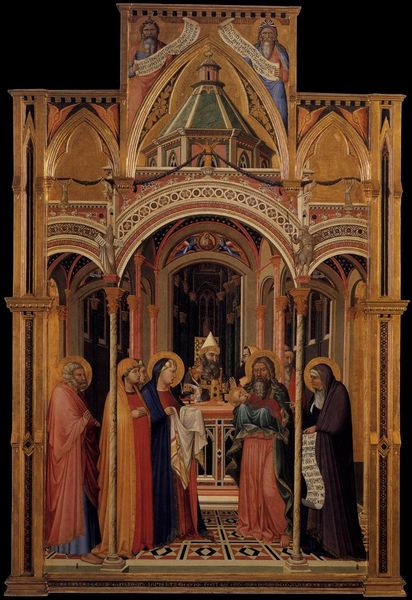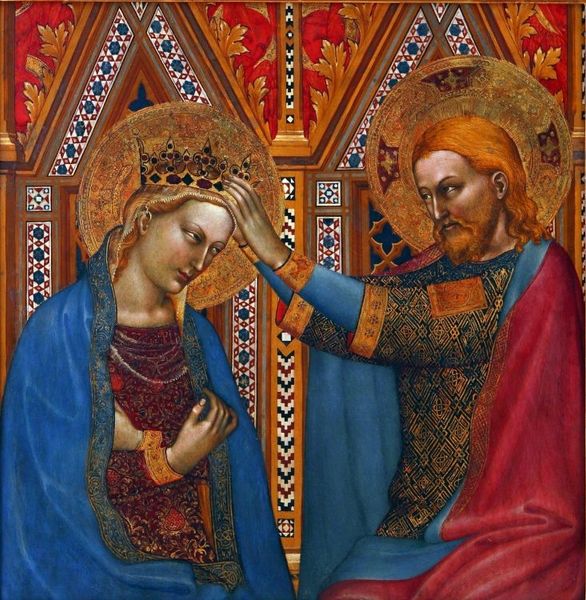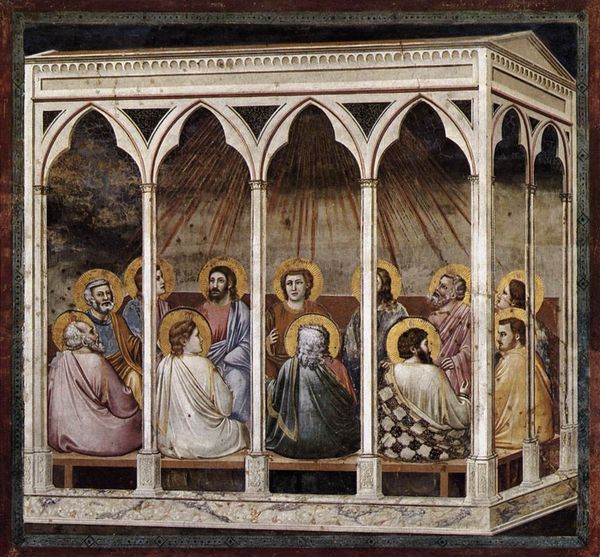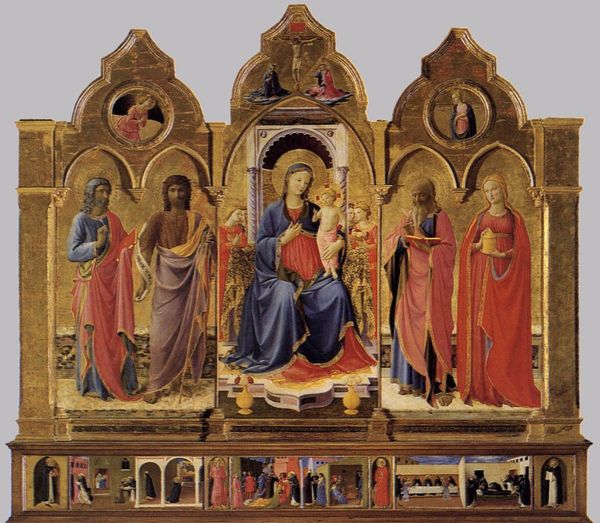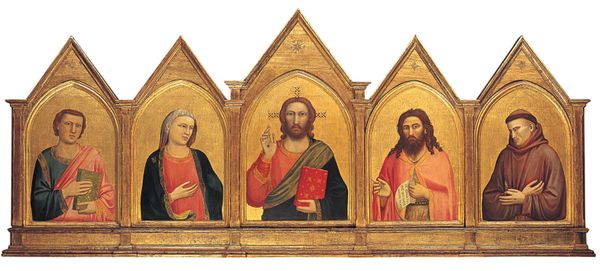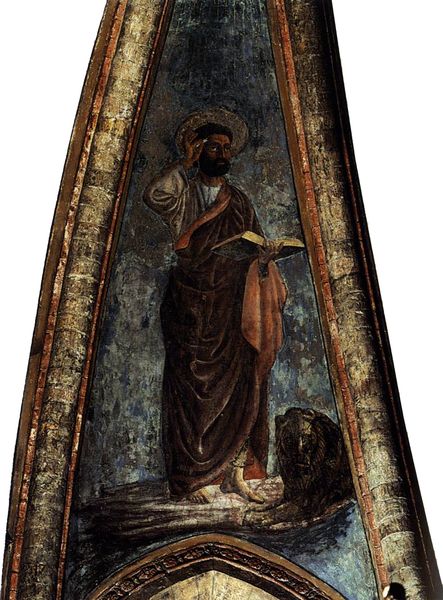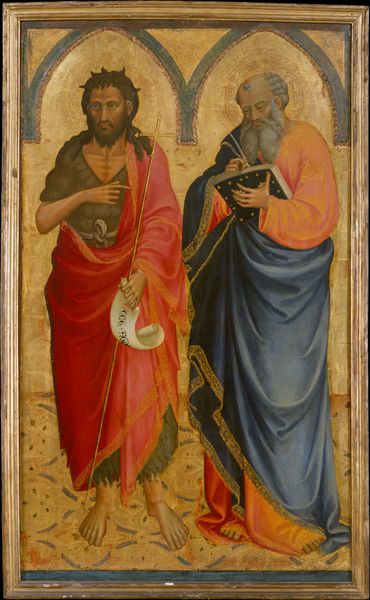
tempera, painting
#
portrait
#
tempera
#
painting
#
sculpture
#
holy-places
#
figuration
#
christianity
#
architectural
#
history-painting
#
italian-renaissance
#
early-renaissance
#
miniature
#
statue
Copyright: Public domain
The Linaioli Tabernacle was painted by Fra Angelico in Florence, Italy, in the 1430s, and it’s a compelling example of art serving a very public role. This work was commissioned for the Arte dei Linaioli e Rigattieri, the linen weavers' and secondhand dealers' guild, and it powerfully illustrates how art could reinforce the social and religious structures of the time. The image creates meaning through the visual codes, cultural references, and historical associations that would have resonated with its original audience. The Virgin Mary and the saints Peter and John appear, signifying their importance for the city of Florence. Understanding this artwork requires looking at the economic structures of Florence at the time. Guilds like the Arte dei Linaioli were not just trade organizations; they were powerful social institutions that played a key role in the city's political and religious life. The tabernacle visually reinforced the guild’s status and its devotion. Art history can offer critical insights into understanding a work such as this. Consulting guild records and religious texts of the period can tell us a great deal about the social conditions that shaped its production and reception.
Comments
No comments
Be the first to comment and join the conversation on the ultimate creative platform.

